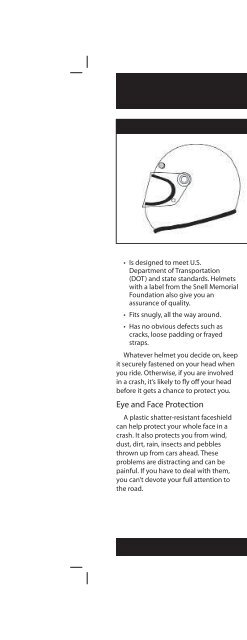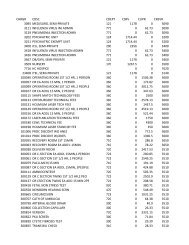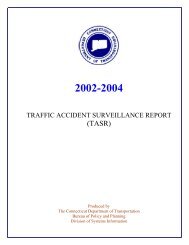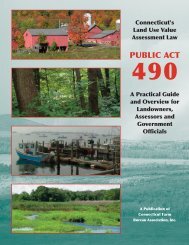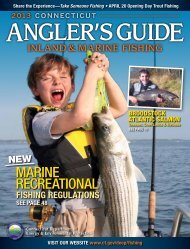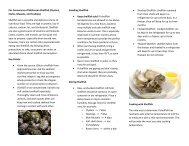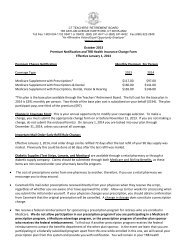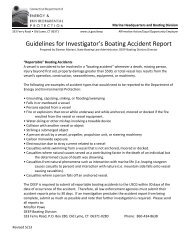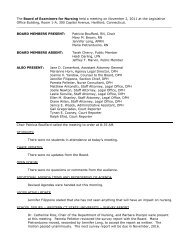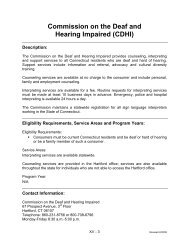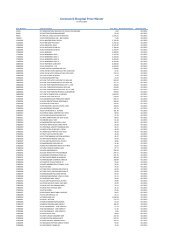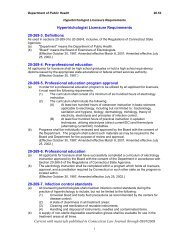The Connecticut Motorcycle Operator's Manual - CT.gov
The Connecticut Motorcycle Operator's Manual - CT.gov
The Connecticut Motorcycle Operator's Manual - CT.gov
You also want an ePaper? Increase the reach of your titles
YUMPU automatically turns print PDFs into web optimized ePapers that Google loves.
• Is designed to meet U.S.<br />
Department of Transportation<br />
(DOT) and state standards. Helmets<br />
with a label from the Snell Memorial<br />
Foundation also give you an<br />
assurance of quality.<br />
• Fits snugly, all the way around.<br />
• Has no obvious defects such as<br />
cracks, loose padding or frayed<br />
straps.<br />
Whatever helmet you decide on, keep<br />
it securely fastened on your head when<br />
you ride. Otherwise, if you are involved<br />
in a crash, it’s likely to fl y off your head<br />
before it gets a chance to protect you.<br />
Eye and Face Protection<br />
A plastic shatter-resistant faceshield<br />
can help protect your whole face in a<br />
crash. It also protects you from wind,<br />
dust, dirt, rain, insects and pebbles<br />
thrown up from cars ahead. <strong>The</strong>se<br />
problems are distracting and can be<br />
painful. If you have to deal with them,<br />
you can’t devote your full attention to<br />
the road.<br />
9<br />
HELMETS<br />
Goggles protect your eyes, though<br />
they won’t protect the rest of your face<br />
like a faceshield does. A windshield<br />
is not a substitute for a faceshield or<br />
goggles. Most windshields will not<br />
protect your eyes from the wind. Neither<br />
will eyeglasses or sunglasses. Glasses<br />
won’t keep your eyes from watering,<br />
and they might blow off when you turn<br />
your head while riding.<br />
To be eff ective, eye or faceshield<br />
protection must:<br />
• Be free of scratches.<br />
• Be resistant to penetration.<br />
• Give a clear view to either side.<br />
• Fasten securely, so it does not<br />
blow off .<br />
• Permit air to pass through, to<br />
reduce fogging.<br />
• Permit enough room for<br />
eyeglasses or sunglasses, if needed.<br />
Tinted eye protection should not be<br />
worn at night or any other time when<br />
little light is available.


